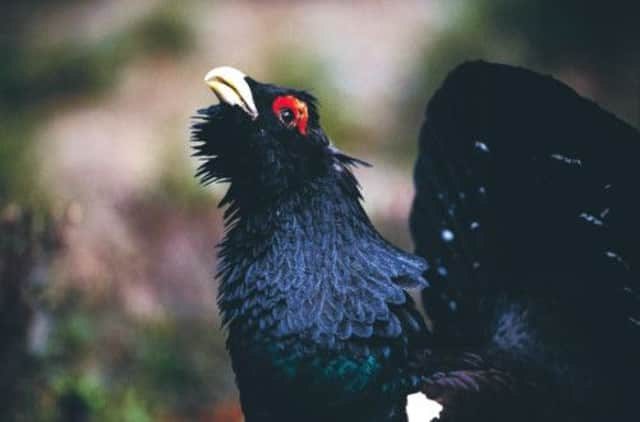Capercaillie crisis sparks pine martens round up plan


New figures published by the Scottish Game and Wildlife Conservation Trust (SGWCT) reveal the number of capercaillies in Scotland has plummeted to an all-time low, from 20,000 in the mid-1970s to 1,200 now.
The Trust now wants pine martens, whose numbers are growing and are one of the main predators of the capercaillie, captured during the birds’ breeding season in spring before being released in the autumn when the chicks are older.
Advertisement
Hide AdAdvertisement
Hide AdBut the idea of catching and holding pine martens in pens in the countryside is strongly opposed by some conservationists, who say it is cruel and unworkable. Their numbers are rising because decades of persecution by gamekeepers and loss of habitat is now being reversed.
Dr Dave Baines, the Trust’s director of upland research, who organises the annual SGWCT capercaillie count, said the species was in rapid and on-going decline with three quarters of Scotland’s capercaillies now restricted to Strathspey and a few other areas.
Baines said: “Pine martens go on raids taking clutches of eggs and chicks from the capercaillie. There has been an abundance of pine martens over the years and their range has increased, probably linked to them now being a fully-protected species.
“I would like to see experimental trials to see if improving management of predators, such as pine martens and crows, would have an affect on capercaillie numbers. We could try catching the animals during the capercaillie breeding season and releasing them a few months later. A test run could see them caught in March or April and kept until August.
“What we want is to see capercaillie numbers increase, but we need to think about what’s gone wrong. If we just re-introduced them to forests they would soon be extinct.”
The capercaillie, which did become extinct in Scotland around 1785 before being reintroduced 50 years later with birds from Sweden, is also under threat from factors including wet weather in spring and summer, when eggs hatch and chicks are being reared; climate change; and housebuilding close to forested areas.
Scotland has had a Capercaillie Biodiversity Action Plan in place since 1995, with a current target of 2,000 birds by 2020 and 5,000 in the longer term, but overall numbers have declined.
However, Dr Pete Mayhew, senior conservation manager of RSPB, North Scotland and chair of the Capercaillie Biodiversity Action Plan, which also includes the SGWCT, questioned the feasibility of rounding up pine martens.
Advertisement
Hide AdAdvertisement
Hide Ad“Are the pine martens to be caged during the three or four months and then allowed back in? Or translocated elsewhere – a previous suggestion which was made was to move them to the north of England.
“Bearing in mind the time and effort involved I would question how realistic this controversial “removal” proposal is.”
Mayhew added that current alternative techniques included diversionary food dumps, which have been set up in forests in Perthshire to attract the pine martens away from capercaillie eggs and young. “It is essential that all parties involved in the Capercaillie Biodiversity Action Plan Group agree. While there is general agreement on issues such as disturbances caused to capercaillies by house-building and people, the science is not so solid on pine martens.”
Victor Clements, an Aberfeldy-based woodlands advisor, who researched the reintroduction of the capercaillie to Scotland in Deeside in 1837 after they became extinct, said “holding pens” for pine martens was not a humane idea and instead advocated reintroducing large numbers of the birds from Scandinavia.
“Wild creatures like pine martens don’t like being in captivity and don’t respond well to stress and in a sense would stop being wild animals,” he said.
“What we need is a higher number of capercaillie released in a large area and I suspect you would need to import them.”
Rounding up pine martens would require a licence granted by Scottish Natural Heritage. A spokesman said: “We do not consider there is, as yet, sufficient evidence to warrant the rounding up of pine martens during the capercaillie breeding season.
“Pine martens are a protected species for a good reason; they are coming back from a real threat of extinction. They are native wild mammals which have coexisted with capercaillie and other species over the long term, and any project such as the one being proposed requires careful consideration.”
Twitter: @ScotsmanShanR